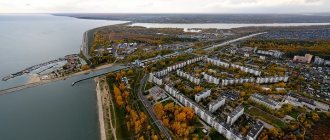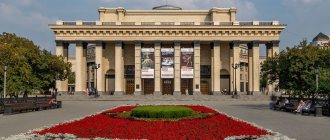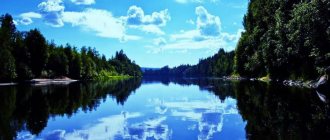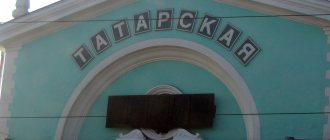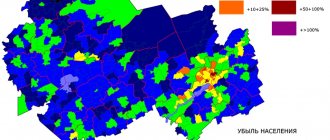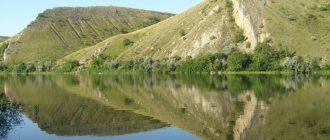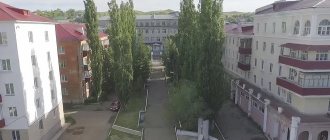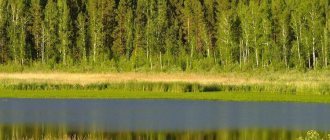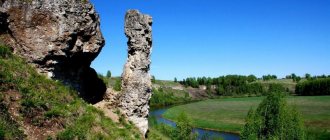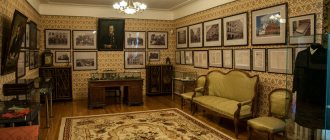Part of the Novosibirsk region
Russia includes 31
urban settlements
, including[1]:
- 14 cities, among which traditionally stand out, according to OKATO[2] and Rosreestr (AGKGN)[3]: 7 cities of regional significance ( highlighted in orange
), of which within the framework of the organization of local self-government[4], included in the administrative system territorial structure according to the Law[5][6]: 4 cities form separate urban districts, - 3 cities are included in the corresponding municipal districts;
- 1 working village (smt), within the framework of the organization of local self-government, forming a separate urban district ( highlighted in
gray in the list).
According to the Law on the Administrative-Territorial Structure, city districts, municipal districts and urban settlements included in the districts are included in the system of administrative-territorial structure[5].
The traditional list of urban settlements - cities of regional significance, cities of district significance and workers' settlements - is supported by information from OKATO [2] and Rosreestr (AGKGN) [3], but in fact its relevance has been lost, the register of administrative-territorial structure, used from 2007 to 2022 years, indicated municipalities[7].
Tyumen is the largest city in Siberia
Tyumen not only holds first place in terms of the area of cities in Siberia, but is also considered one of the best cities to live in the country. The main industry here remains oil refining. The production of petroleum products allows local enterprises to become rich before our eyes. Also, the production of engineering products and equipment occupies a central position in the economy of Tyumen.
There are many universities and scientific organizations located in the city. Tyumen is considered one of the scientific capitals of Russia. Great potential lies in the Institute for Problems of Northern Development, which is chosen not only by students from Russia, but also from foreign countries for higher education.
There is a long list of religious buildings located in Tyumen. They are mainly represented by Orthodox churches. There are also active Catholic, Protestant, Muslim and Jewish ones. Tyumen has a huge number of theaters and museums, public libraries, the largest of which is the Mendeleev Scientific Library. It is considered the largest in the entire western Siberia. The list of city attractions includes 17 cultural heritage sites of federal significance, several forest parks, and geothermal springs.
Natural attractions
Taiwan Island
Coordinates: N 54°49′00″ E 83°02′13″ How to get there: 292 km from Berdsk along the P-256 highway to the village of Geologists by car in 3 hours.
A piece of land with an area of 0.06 km², which was formed in the Novosibirsk reservoir after it was filled.
It is also called Bear Island or Tanwan. The origin of this name is interpreted by the scientist Guriy Ivanovich Marchuk as follows: it was a famous meeting place for couples in love (Tan and Van).
Now the island is uninhabited, and birches grow on it.
Ulantova Mountain
Coordinates: N 54° 52'44.3″ E 84° 18'19.87″ How to get there: from Novosibirsk by regular bus “Novosibirsk - Belovo” 101, 5 km to the village of Lebedevo in 2 hours.
A 407-meter-high environmental protection site containing valuable ecosystems.
About 500 species of local fauna live here and 325 varieties of plants grow, including coniferous and deciduous trees.
Lake Danilovo
Coordinates: N 56°25′35″ E 75°50′24″ How to get there: by car from Novosibirsk to the village of Okunevo 184 km in 2 hours 20 minutes.
The 16.2 m deep reservoir is part of the “Five Lakes” group, which, according to local legends, were formed as a result of a meteorite fall.
They also claim that the water in the lake is healing due to the presence of silver in its composition, which has not yet been confirmed by any scientific research.
Blue clay is mined in the lake. On the shore there are tourist centers offering rental of catamarans, boats and houses for outdoor recreation.
Lake Shaitan
Coordinates: N 56°29′20″ E 74°53′34″ How to get there: by car from Novosibirsk to the village of Okunevo 184 km in 2 hours 20 minutes.
A reservoir near the village of Okunevo, also part of the “Five Lakes” group. It received this name because of the belief of local residents that this lake is of supernatural origin with “dead” water.
The lake has such a feature that it is impossible to measure its depth.
There are Buddhist settlements on the shores of the lake.
Lake Linevo
Coordinates: N 56°24′24″ E 75°37′23″ How to get there: by car from Novosibirsk to the village of Okunevo 184 km in 2 hours 20 minutes.
The third lake from a group of five lakes.
The water in the lake is clean, there is a sandy beach and a recreation center nearby.
Lake Secret
Coordinates: N 54°50'28" E 77°13'46" How to get there: by car from Novosibirsk to the village of Okunevo 184 km in 2 hours 20 minutes.
The fourth lake, which was allegedly formed due to a meteorite impact on the earth.
So named because it is rarely shown on maps.
There is a version that the existence of this lake is generally a myth.
Black Lake
Coordinates: N 55.464373° E 83.042816° How to get there: by car 55 km from Novosibirsk towards Kolyvan in 35 minutes.
A reservoir with a length of 42 km, located in the southwest of Novosibirsk.
The lake is home to many species of fish: crucian carp, roach, smelt and others.
Badger Cave
Coordinates: N 54°22′14″ E 83°57′42″ How to get there: from Novosibirsk 1 hour 38 minutes along the M-52 highway to Cherepanovo, then turn left to Maslyanino and left again to Barsukovo 140 km.
Natural monument of karst origin.
The depth of the cave is about 19 meters and the length is about 100 meters in length.
Salair Ridge
Coordinates: N 54°05′23″ E 85°49′40″ How to get there: from Novosibirsk by car in 3 hours 38 minutes 274 km towards Salair.
A low-mountain hill with an area of about 100 km.
It is located not only in the Novosibirsk region, but also in the Altai Territory.
Belovsky waterfall
Coordinates: N 54.560156 E 83.621157 How to get there: from Novosibirsk 102 km to the village of Belovo in 1 hour.
A popular place in the Iskitim region.
The waterfall is located in a birch forest, formed approximately in the 80s of the last century due to development and coal mining carried out here.
The height of the waterfall is about 5 meters, the water in it is clean and drinkable.
Berd Rocks
Coordinates: N 54°36′34″ E 84°00′38″ How to get there: by regular bus 49 km from Novosibirsk to Iskitim in 40 minutes, then by bus to the village of Novososedovo 79 km in 55 minutes and 2 km on foot.
A natural monument with an area of 26.7 hectares.
Valuable forest and steppe ecosystems are located here.
Is under state protection.
Novosibirsk Reservoir (Ob Sea)
Coordinates: N 54°38′ E 82°38′ How to get there: by car from Novosibirsk 78 km in 1 hour 47 minutes towards the village of Verkh-Irmen.
Formed as a result of the construction of the Novosibirsk hydroelectric power station in 1959.
Includes a number of islands. This place is popular among fishermen and active recreation enthusiasts.
Kirzinsky reserve
Coordinates: N 55°3'23" E 77°51'11" How to get there: from Novosibirsk by car in 3 hours 38 minutes 343 km to the village of Kirzinsky.
A nature reserve with an area of 119,808 hectares. Opened April 11, 1958.
The territory of the reserve, which is located in the central part of the Baraba forest-steppe, is home to valuable game animals (roe deer, elk, fox, lynx, corsac fox, weasel, badger, ermine, muskrat, brown and hare hares) and rare species of birds and fish.
Novosibirsk is a large metropolis
Novosibirsk is often called the unofficial capital of Siberia. It is one of the cities in Russia that has a significant impact on the development of the country's economy. The main feature of the economy of a large city was the absence of monopolies, the development of the business sector, and the comprehensive development of the economy. The metropolis had to endure a significant crisis during the 90s.
Later, it began to occupy a central position in the distribution of penumbral imports. Now industrial specialization is of secondary importance, while logistics, science and services have become the main ones. The city is considered one of the most developed economically in the world. At the same time, industry remains an important driver. More than 200 large enterprises are concentrated here. The main directions of the industrial sector remain:
- energy;
- metallurgy;
- metalworking;
- mechanical engineering.
Novosibirsk is an important scientific and educational center of the country. The famous Academy Town with dozens of research institutes is located here. Every year more than 30 universities accept new students wishing to obtain higher education in scientific specialties.
The cultural significance of the metropolis is great. The Opera House still remains an important symbol; on the territory of Novosibirsk there are also philharmonic societies, cinemas, planetariums, a large zoo, and museum complexes. Festivals are held regularly and there is plenty of religious architecture.
Ob is a small suburb of the capital
The small town of Ob is located just 5 km from Novosibirsk, thanks to which it is part of the capital’s agglomeration. This determines the high population - 29,194, which puts Ob in fifth place among the largest settlements in terms of this parameter. The Ob settlement arose in 1934 and initially played the role of a railway station on the Trans-Siberian Railway.
The station was located near the village of Tolmachevo. During the war, aviation units were based nearby, and later an airport of the same name appeared. Today the air harbor is a city-forming enterprise, and a significant part of the residents work or study in the capital. From 2011 to 2022, the number of city residents increased by almost 4,000 and continues the positive trend. This is due to its suburban status: the area is dynamically built up with modern houses, and good transport infrastructure provides the ability to quickly get to the center.
Omsk is large and developed
Omsk is one of the largest cities in the Russian Federation and has important scientific, cultural and industrial significance. On its territory there are enterprises engaged in the aerospace industry, mechanical engineering, instrument making, petrochemical, and food industries. Omsk also became one of the main centers of education in Siberia. Local residents have 28 universities at their disposal, the oldest of which is already 100 years old. The list of the most significant includes the Siberian Automobile and Highway University.
In addition to the state ones, there are non-state educational institutions engaged in the education and training of specialists for the service sector. The main scientific center is the center of the Siberian Branch of the Russian Academy of Sciences. It is he who has a supercomputer center with enormous computing power.
Many studies are devoted to the problem of hydrocarbon processing, since the oil industry has long occupied a central position. The culture of Omsk is a great joy for the city's residents. The first Sunday in August becomes the day of parades, when almost all Omsk residents tend to go out into the streets. The metropolis became famous as a city of artisans, film festivals, and big celebrations. The main film event of the entire region is the Omsk National Debut Film Festival, proudly called “Movement”. Omsk offers guests many theaters and museums, among which are the local history museum, the fine arts museum, and the Dostoevsky literary museum.
Cities[ | ]
| № | Name | district/city of regional significance[9] | municipal district / urban district[10] | population, people | founding/first mention | city status | coat of arms |
| 1 | Barabinsk | Barabinsk city | Barabinsky municipal district | ↘28 546[8] | 1893 | 1917 | |
| 2 | Berdsk | Berdsk city | Berdsk city, GO | ↘103 561[8] | 1716 | 1944 | |
| 3 | Bolotnoe | Bolotninsky district | Bolotninsky municipal district | ↘15 344[8] | 1805 | 1943 | |
| 4 | Iskitim | Iskitim city | Iskitim city, GO | ↘55 433[8] | 1717 | 1938 | |
| 5 | Karasuk | Karasuk district | Karasuk municipal district | ↘26 733[8] | 1912 | 1954 | |
| 6 | Kargath | Kargatsky district | Kargat municipal district | ↘8914[8] | XVIII century | 1965 | |
| 7 | Kuibyshev | Kuibyshev city | Kuibyshevsky district | ↘43 195[8] | 1722 | 1782 | |
| 8 | Kupino | Kupinsky district | Kupinsky municipal district | ↘13 711[8] | 1886 | 1944 | |
| 9 | Novosibirsk | city Novosibirsk | Novosibirsk city, GO | ↘1 620 162[8] | 1893 | 1903 | |
| 10 | Ob | Ob city | Ob city, GO | ↗30 131[8] | 1934 | 1969 | |
| 11 | Tatarsk | city of Tatarsk | Tatar municipal district | ↘23 282[8] | 1894 | 1911 | |
| 12 | Toguchin | Toguchinsky district | Toguchinsky municipal district | ↘20 489[8] | 1867 | 1945 | |
| 13 | Cherepanovo | Cherepanovsky district | Cherepanovsky municipal district | ↘18 846[8] | 1912 | 1925 | |
| 14 | Chulym | Chulymsky district | Chulymsky municipal district | ↘10 926[8] | 1762 | 1947 |
Krasnoyarsk is a comprehensively developed metropolis
Krasnoyarsk was once called Bolshoi Ostrog. Even earlier, it became a center of attraction because it was located in a convenient place to live. It is believed that the first people settled on the territory of modern Krasnoyarsk closer to the Paleolithic era - approximately 35 thousand years ago.
The city's industry is represented by petrochemical and oil refining enterprises, there are factories for the production of non-ferrous metals, and there is a pharmaceutical plant that began producing penicillin more than 50 years ago. The educational sector also occupies a central position in the economy of Krasnoyarsk. The list of educational institutions is unusually large, including summer school, vocational schools that train technical specialists, polytechnic, pedagogical, assembly, construction colleges and technical schools. Krasnoyarsk is one of the scientific capitals with its own Academy Town. Local specialists study the problems of forest development, engage in computational modeling, biophysics and other areas. The culture of the metropolis is unusually rich. Many attractions are visited by tourists from different countries and regions of the Russian Federation. Dozens of sculptural compositions, museums, concert halls, theaters, libraries - Krasnoyarsk offers many options for cultural leisure.
Parks, entertainment and more
Biotechnopark Koltsovo
Address: r/p Koltsovo, st. Tekhnoparkovaya, 1 Phone: 8 (3833) 06‑19-17, 8 (3833) 33‑37-03 Website: ick.ru Opening hours: Mon-Fri 9:00-18:00
An industrial park with an area of 114 hectares, the sites of which present the results of research and production in biotechnology and related fields.
The decision to create it was made by the government of the Novosibirsk region in 2011, and since then the construction and development of this science city in the form of a giant glass caterpillar has been underway.
Inside the building there are office premises, chemical, analytical and microbiological laboratories, a children's technology park and conference rooms.
Novokuznetsk is a large industrial city
Novokuznetsk has always served as a city producing coal, non-ferrous metals and providing energy for the region. This played a role in making Novokuznetsk one of the most polluted settlements in Russia. The problem with multiple excesses of carbon monoxide concentrations is still acute. In addition to developed industry, there are a number of educational institutions, of which four are higher. The main areas of study remain industrial industry and technical specialties.
Novokuznetsk is known as a city of many religions. Representatives of Orthodoxy, Catholicism, Buddhism, Judaism, Hinduism and many others found their refuge here. Novokuznetsk can offer tourists an interesting cultural program. The local history museum has exhibitions detailing the wealth of the Novokuznetsk region; the museum is famous for the lectures of its guides.
Since the city has a rich religious life, there are many interesting temples, including wooden ones. The main Orthodox shrine is the Church of the Nativity of Christ. Local squares are suitable for the promenade; inquisitive tourists will enjoy the Novokuznetsk Planetarium.
The smallest cities of the Novosibirsk region
There are only 14 cities in the Novosibirsk region, so most of them fall into the top 10 small ones in terms of population and territory. There is only one million population - the capital Novosibirsk with a population of 1,612,833 and a territory of 505.62 km². Moreover, it is the third largest city in Russia.
It is even more surprising that in addition to it, there is only one settlement in the region where the number of residents exceeds 100,000. We are talking about Berdsk, where almost 16 times fewer residents live - 103,290. At the same time, it is in seventh place from the bottom in size, which makes it both small and large at the same time.
An even more unusual story is about the small town of Chulym. Surprisingly, in terms of territory size it is closest to Novosibirsk with an indicator of 203 km². However, only 11,270 people live here, which puts it in second place on the list of settlements with the minimum number of citizens. Another large settlement is Kuibyshev with an area of 109.73 km². For other cities this figure does not exceed 81 km².
Top 10 smallest cities in the Novosibirsk region by size (value in km²):
- Cherepanovo - 20.
- Ob - 21.95.
- Iskitim - 29.9.
- Kupino - 32.
- Karasuk - 35.76.
- Bolotnoye - 59.
- Berdsk - 67.
- Barabinsk - 69.48.
- Kargath - 69.
- Tatarsk - 80.
Rating of cities with the smallest population:
- Kargat - 9,516.
- Chulym - 11,270.
- Kupino - 13,781.
- Bolotnoye - 15,626.
- Cherepanovo - 19,612.
- Toguchin - 21,159.
- Tatarsk - 23,956.
- Karasuk - 27,196.
- Barabinsk - 29,122.
- Ob - 29,194.
Novosibirsk is located in Western Siberia
This city is the largest in Siberia. The area of Novosibirsk is a little more than 500 square kilometers (this is five times smaller than Moscow).
Novosibirsk is located on both banks of the Ob (there is also the Novosibirsk Reservoir near the city). From Moscow to this city three thousand four hundred kilometers.
In general, Novosibirsk is a fairly large agglomeration that quickly covers the suburbs and nearby villages. At the same latitude as Novosibirsk are located: Moscow, Kaliningrad, Omsk, Chelyabinsk. This city has one and a half thousand streets and ten districts.
Novosibirsk is not the most distant city in Russia
It turned out that Novosibirsk is not yet the most distant city in Russia . There are also Krasnoyarsk, Irkutsk and the whole Far East. But you shouldn’t even try to drive into Novosibirsk by car. It's good if you arrive in a week. You can't sit behind the wheel all day long. I considered the option of a train, but this transport could not get there much faster, and it is not cheap. There was nothing left but to get to Moscow with my friend and business partner, and then board a plane.
Districts of Novosibirsk (city microdistricts)
Dzerzhinsky
on the map (Dzerzhinsky district, Novosibirsk) Located on the right bank of the Ob. The area of the district is 41.3 sq. km. The length of the region from north to south is 5 kilometers, from west to east - 5.5 kilometers. There are 220 streets and alleys in the Dzerzhinsky district, among which the main ones are: Dzerzhinsky Avenue, Aircraft Prospekt, Koshurnikova, Boris Bogatkov, Uchitelskaya.
Railway
on the map (Zheleznodorozhny district, Novosibirsk) The oldest in Novosibirsk. The first residential buildings appeared in 1893 in connection with the construction of the East Siberian section of the Siberian Railway. Until 1932, the area was called the Station part of the city. In August 1936, by the decision of the Novosibirsk City Council of Workers, Peasants and Red Army Deputies, the Kaganovichi District was formed. The district was renamed Zheleznodorozhny in 1957. On February 1, 2013, the Zheleznodorozhny District became part of the Central District. Territory - 8.3 sq. km.
Zaeltsovsky
on the map (Zaeltsovsky district, Novosibirsk) Zaeltsovsky district is located in the northwestern part of Novosibirsk. Territory – 83.0 sq. km. It includes a forest area of 1200 hectares, 3 rivers, 2 islands. More than 190 streets and alleys pass through the territory. The total length of streets is 162 km. Main streets: Dusi Kovalchuk, Krasny Prospekt, Kropotkina, Zhukovsky.
Kalininsky
on the map (Kalininsky district, Novosibirsk) The Kalininsky district was formed from part of the territory of the Dzerzhinsky district according to the Decree of the Presidium of the Supreme Soviet of the USSR dated October 20, 1980, in connection with the planning of the construction of large residential areas in the northern part of the city. In December 1997, the working village of Pashino was included in the district, which became a kind of enclave of the city.
Kirovsky
on the map (Kirovsky district, Novosibirsk) Located on the left bank of the city. Until 1930 - Bugrinsky district of the Novosibirsk district. The center is the village of Bugry, which was the largest among the surrounding villages. October 20, 1930 - By resolution of the Presidium of the All-Russian Central Executive Committee, the Zaobsky district was formed. December 2, 1934 - By resolution of the Presidium of the Novosibirsk City Council, the Zaobsky administrative district became Kirovsky. The renaming occurred after the report of the murder of S. M. Kirov. The area of the district is 52.0 sq. km.
Leninist
on the map (Leninsky district, Novosibirsk) The third largest and most populated district of Novosibirsk. Located on the left bank of the Ob. Territory - 70.3 sq. km. The main highways of the area are: Karl Marx Avenue, Vatutina Street, Stanislavsky Street, Titov Street, Station Street. The Leninsky district is connected to the right bank part of the city by a railway bridge across the Ob and two road bridges: Dimitrovsky and Kommunalny.
October
on the map (Oktyabrsky district, Novosibirsk) The district was founded in 1929. Before that it was called Zakamensky (since, relative to the central part, it was located behind the Kamenka River). This is one of the oldest parts of the city of Novosibirsk. Territory - 57.6 sq. km. Main streets: Bolshevistskaya, Vybornaya, Voskhod, Boris Bogatkova, Nikitina, Kirov.
Pervomaisky
on the map (Pervomaisky district, Novosibirsk) The area consists of several parts, separated by forests and railway tracks. One part of the area faces the M52 federal highway. A significant part of the area is occupied by the private sector. The area of the district is 69.3 sq. km.
Soviet
on the map (Sovetsky district, Novosibirsk) One of the administrative districts of the city of Novosibirsk, sometimes also called, after its most important part, Novosibirsk Akademgorodok. It is located in the south of the central part of the city on both banks of the Ob River and the Ob Sea. The area of the district is 76.7 sq. km. The most important streets are Lavrentieva Avenue, Morskoy Avenue, Primorskaya, Russkaya, Berdskoe Highway.
Central
on the map (Center, central district, Novosibirsk) Area of the district - 6.4 sq. km. Since February 1, 2013, the district has been merged with the Zheleznodorozhny and Zaeltsovsky districts into a single Central District
Churches, cathedrals and temples
Holy Spring Iskitim
Coordinates: N54°34.437′ E 83°21.288′ How to get there: by regular bus 49 km from Novosibirsk to Iskitim in 40 minutes.
A spring with healing water is located near the village of Lozhok, Iskitim region.
There is a legend that the water clogged here after the mass execution of prisoners in Siblag, a forced labor camp that was organized near these places in the 30-40s of the 20th century.
The spring was repeatedly blown up during the years of Soviet power, but it still continued to flow in this place. Now a church has been built near it, and the area near the source has been landscaped.
This is a popular place for parishioners to visit. Local residents have a tradition of coming to the holy spring during weddings.
St. Nicholas Church in the name of St. Nicholas the Wonderworker
Address: Iskitim, st. Collective, 1 Phone: 8 (3834) 36‑82-42, 8 (3834) 33‑83-43 Website: iskitimeparhia.ru Opening hours: Mon-Sun 8:00-19:00
The temple building was built from 1989 to 2013. On August 11, 2022, its consecration was carried out, Bishop Luka of Iskitim and Cherepanov was appointed ruling bishop.
The main shrine of the temple is the icon with the image of the Mother of God “Softening Evil Hearts,” transferred to the church from the Novosibirsk Metropolis.
Church in the name of St. Seraphim of Sarov
Address: Bolotninsky district, village. Turnaevo, st. Khokhlovka, 1
This temple is called “Siberian Kizhi” because it was built in 1912 on a stone foundation made of pine logs without nails.
Since 1940, the temple was closed and converted into a granary.
The church became operational again after renovation in 1998. Restoration work was carried out in the next decade under the leadership of architects A. I. Lykov and S. M. Klepikov.
Alexander-Pokrovsky Convent
Address: town. Kolyvan, st. Kalinina, 22 Phone: 8 (3835) 25‑27-77 Website: kolivan-pokrov.ru Opening hours: Mon-Fri 8:30-17:00; Sat 8:30-19:00; Sun 8:00-18:00
The monastery in the village of Kolyvan was opened in 1992 on the initiative of Bishop Tikhon (Emelyanov) of Novosibirsk and Barnaul. Prior to this, in 1991, Patriarch Alexy II of Moscow and All Rus' visited this place and blessed the beginning construction of the monastery.
Now about 40 nuns and novices live and work in the monastery. A Sunday school has been opened at the monastery, where children of Kolyvan parishioners study.
In the church at the monastery there are such shrines as icons of saints Alexander Nevsky, Silouan of Athos, Innocent of Irkutsk, Tikhon, Patriarch of Moscow, Luke of Simferopol, Gury of Kazan, Philaret of Moscow, John of Tula and Nicholas of Alma-Ata with particles of relics, as well as a cross with a particle Life-giving Tree of Christ.
